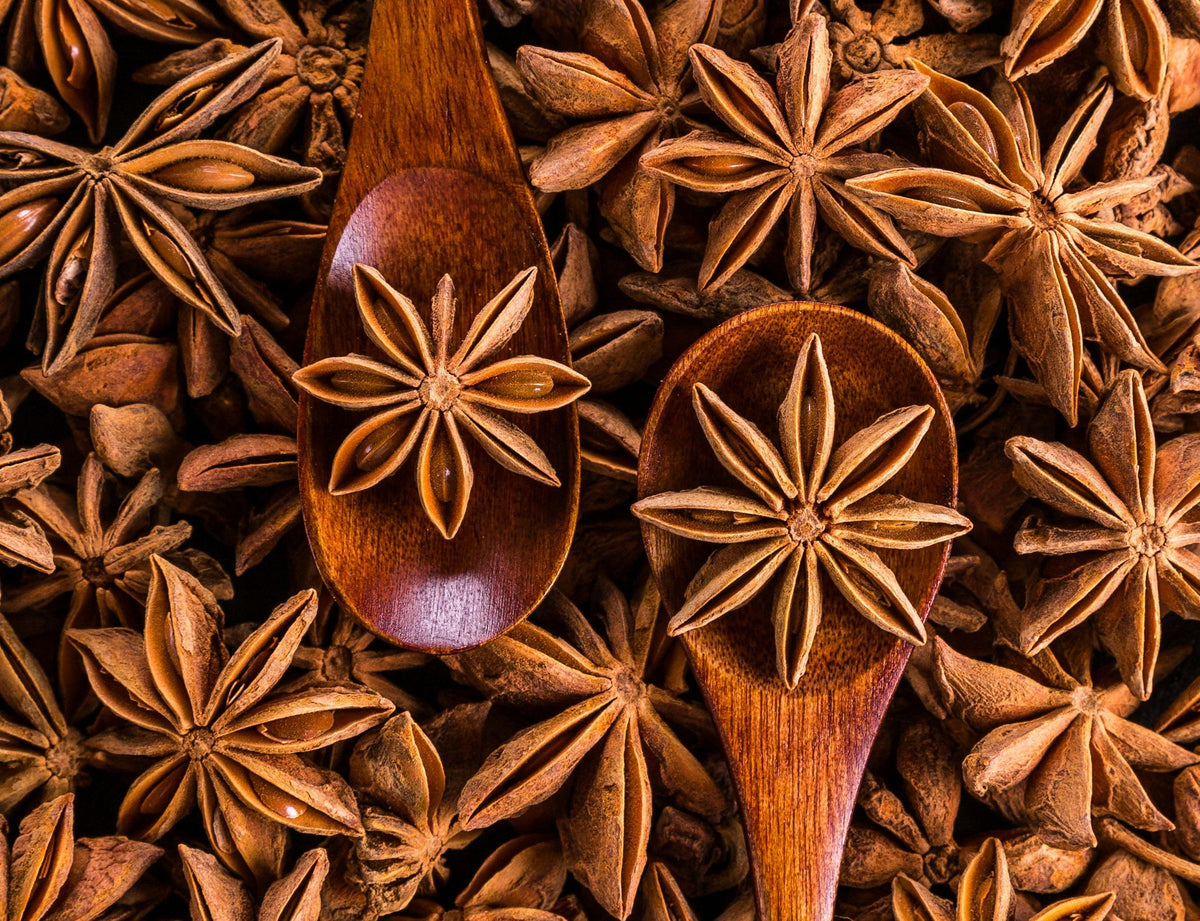
Legendairy Herbs: What is "Anise"?
|
4 min
|
4 min
Anise is a tasty herb when added to culinary dishes and is used medicinally. It has also been shown to have numerous health benefits, from promoting milk production in new mothers to reducing hot flashes during menopause.
Anise (Pimpinella anisum) is native to Egypt and the Eastern Mediterranean region but is also cultivated in many other areas of the world. Anise is also known as Aniseed but unrelated to Star Anise. It is an annual flowering herb in the Apiaceae family. This family of plants also includes carrots, celery, and parsley.
The Anise plant grows up to three feet tall. The stems are branched and have feathery leaves. The yellow or white flowers grow at the end of short stalks, in a cluster, off the top of the stem. When you plant Anise, it should be in the place it is going to be allowed to stay because it has a main taproot that doesn’t like transplanting. If you do need to transplant it, do it when the plant is still small. It prefers soil that is light and drains well and can be planted in early spring as soon as the ground warms up a little. It is easy to grow and behaves as a natural insecticide in your garden.
Anise has been used as a remedy around the world. It dates back to the ancient Egyptians in food preparation, and the Romans made seed cakes to enjoy after meals to aid digestion. It has been used in India after meals as a breath freshener. Anise has a sweet licorice flavor.
Have you ever read The Hobbit? In this time treasured book by J. R. R. Tolkien, Bilbo Baggins served Anise seed cakes to the dwarfs who were unexpected lunch guests. In Germany, Anise is used in bread called Anisbrod. Other regions like Asia and the Mediterranean use anise in meat and vegetable dishes rather than in sweet breads and pastries.
Anise is used as a galactagogue to help support and increase milk production for new parents. It is a tradition in the Netherlands to give a new mother anise biscuits to celebrate the birth of her baby and encourage a bountiful milk supply.
Anise is a digestive herb that calms digestion and supports the hormones important for milk production, like prolactin and oxytocin.(1) Prolactin is the hormone responsible for making milk, and oxytocin is the “feel good” hormone that helps with milk flow and release.
One study looked at two properties of Anise and their effect on lactation in rats. One group of rats was given a placebo, while the other groups were given an Aniseed extract. They measured the pups' weight from days 3 - 15 to determine the estimated milk yield. The Anise group produced significantly more milk than the placebo group, and the weight gain of the pups in the Anise group was significantly better compared to the control group. (2)
Legendairy Milk’s Lechita combines Anise with fennel and caraway, two other digestive herbs, to help encourage milk flow.
Liquid Gold has Anise seed as one of its ingredients, along with other powerhouse herbs, to increase milk production and flow.
If you are allergic to other plants in the same family, there is a possibility of allergy. It is best to always talk to your doctor before adding supplements.
Anise has been used for centuries in culinary and medicinal ways in many cultures worldwide. There are all sorts of ways to include anise seed in culinary dishes to give a unique flavor and benefit from its health-promoting properties, including promoting lactation, aiding digestion, improving heart health, and reducing symptoms of depression and menopause. Anise contributes to hormonal and digestive health.